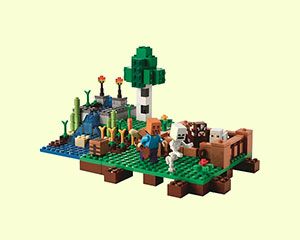
Featured Image: Source
The renowned toy company, Lego is committed to go green as it recently expressed its intent to invest a mammoth amount of $150 million in a project to develop new sustainable materials that will be used in its production process. The iconic building blocks by Lego are made up of plastic; realizing the damage that this material cause, the brand now wants to opt for an alternative. The organization also showed its plans to bring forth and promote environment-friendly packaging. There are scores of organizations that have set the examples of conducting eco-friendly sustainable business practices and now Lego is also jumping into the bandwagon to turn its business green.
The core philosophy of this project is driven from Lego’s ultimate mission of leaving a positive and meaningful impact on the planet that future generation will inherit. To show its staunch determination to accomplish this objective, Lego is also planning to set up a Lego Sustainable Materials Centre in Denmark. A team of specialists will be staffed to work on this project at this center the door of which are slated to be opened in 2016. The team also has plans to collaborated and team up with outside organizations and specialists to come up with an idea to replace usage of plastic in block manufacturing. They are working close with universities and research center to not only discover the improvement that can be brought by potential materials. Also, one of the amazing things about this project is that they are not only restricting their focus on the production process; rather, they are adopting a 360 approach to see the impact of materials used in the production process to the end of the product lifecycle and observe the way environment can be affected by the way family tosses out a toy.
Since 1963, Lego have been making its famous blocks from a strong and resilient plastic material acrylonitrile butadiene styrene (ABS). Reports also suggest that the brand approximately uses 6,000 tons of plastic in the manufacturing process of its toy blocks. In 2014 alone, the organization made 60 billion pieces of Lego blocks.
It’s not the first ever step that the organization is taking to show its concern for environment protection, but the brand has also taken some serious steps in the past. Reduction in packaging size, taking steps to reduce carbon footprints and forest certified packaging are some of the initiatives that the brand has already taken to create positive impact on the planet and to operate its business on ethical grounds. To make its packaging safe and environment friendly, Lego has introduced Forest Stewardship Council certified packaging. Not only that, but the organization has also set up an offshore wind farm. Taking a step further, now the organization also wants to focus on its production materials. It is a huge task and move that Lego has taken and it is supposed that the organization would be able to alter its production process by 2030.
In today’s era, where people are more aware of their environment and surroundings, it is imperative for organizations to take actions that show that they are environment friendly. Now that the toy giant is stepping ahead in this game, it would be interesting to see how this brand incorporates sustainable business practices. Nonetheless, it is imperative to encourage and appreciate organizations for going green as the worsen climate change and ever deteriorating environment calls for sustainable and responsible actions.
Kelly Sampson is a writer, blogger, and environmental enthusiast. She has strong opinions about climate change, the dogs vs. cats debate, and Oxford commas. She has lent Hummingbird International her engaging and spirited voice and turned our blog into a great place to find valuable information about e-waste, e-waste recycling, and the ITAD industry. Explore our blog to read more of her work.